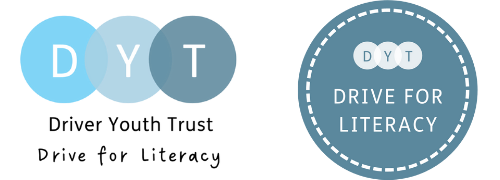Myths that surround dyslexia
11/1/2017

DYT participated in a Radio 5 Live programme recently (you can listen here). The guests included Caitie Glover, a 12-year-old girl from Chelmsford in Essex, who came to fame last year having created a smartphone app that helps identify dyslexia. She was joined her dad, Steve, John Rack of Dyslexia Action and Iain Little-Granger MP, himself dyslexic.
They spoke passionately about the effects of dyslexia, Caitie’s personal experiences of school, and the response to changes in policy and legislation on Special Educational Needs and Disability (SEND).
It was great that the programme gave time to this important issue and the passion of Caitie and her family in bringing her issues to a wider audience, many of whom will recognise her struggles.
Some of the points discussed have truth behind them, such as the lack of teacher training cited in DYT’s Fish in the Tree Report. However, much of the talk was based on personal experience and represents an overarching story that is neither an accurate depiction of dyslexia or of how schools are responding to the needs of dyslexic learners.
If we are going to make changes for the better, then we need to bust some dyslexia myths:
- Creativity – many people think and claim that dyslexics are nearly always creative, and they take this to mean in the arts. The truth is that children and young people with dyslexia are creative – or not – in equal measure. Many dyslexics excel in mathematics, sciences and technology, as much as they do in the arts and, in this, they are no different from their peers. Maggie Aderin-Pocock, a renowned British space scientist and presenter on The Sky at Night is just one example.
- ‘Super powers’ – dyslexia is often regarded as a strength – if not a superpower. But for every success story, where a dyslexic person has beaten the odds, there are many who found that dyslexia meant that school life for them was hard and frustrating, with a knock-on effect on their self-esteem. My concern is that those who are successful are deemed as more worthy than those who are not. A dyslexic person might be bright, articulate and hardworking not because of dyslexia, but despite it.

Richard Branson has said: “Dyslexia is my greatest strength”
- Diagnosis – being diagnosed with dyslexia is not essential to get support at school and assessments rarely provide sufficient depth of information to teachers or SENCOs. There is no doubt that for the individual concerned knowing they have dyslexia can mean a lot for self-esteem, but knowing one has it won’t make any of the difficulties go away.
- Awareness – Knowing what dyslexia is can be helpful in understanding a young person’s lack of progress. However, it does not help a teacher understand what to do for a learner in their classroom or how and when this should be done. This is the same for a learner struggling with literacy whatever the reason – personal history, EAL or just finding it hard. See here for a link to Drive for Literacy, our programme to support teachers with free resources, information and advice for teaching dyslexic learners.
- Sameness – It is undoubtedly true that the definition of dyslexia – in a scientific sense – is less than perfect and this is important if we want to ensure that a diagnosis is reliable and valid. However, most of us will not need to worry about the difference between a child with a processing speed in the 5th percentile compared to someone in the 15th. Rather, we need to understand how this is expressed as an educational need. Dyslexic learners as with other forms of SEND, have common difficulties although these will not necessarily be at the same severity, occur at the same time or be expressed in the same way. Broad brush assumptions are rarely helpful and a more nuanced understanding is needed, despite the demands for a catchy sound-bite.
- Attainment– A child can have dyslexia and still attain. They may have specific difficulties with literacy, working memory or processing, but many of these can be overcome using relatively simple strategies to help themselves or their teachers to help them learn. Or, a child can have dyslexia and have low or average attainment. They can be a ‘dyslexic genius’, or dyslexia can form just one of a raft of difficulties.
- School funding – a failure to support a child or young person with dyslexia, is not only connected to a lack of funding. Resources play an important role in any school’s SEND provision, but much support can be offered in the classroom with little to no cost. The biggest change that makes a difference is one of attitude.
An understanding of what dyslexia is and how to include learners with dyslexia in a classroom is hampered by these myths and others. The need for clarity in the language used in the passionate appeals by young people, families and their supporters has never been greater if we want to be listened to and see real change for dyslexics who are as unique as any individual.
We need to change the narrative from ‘how awful everything is’ to a more positive one that recognises the legislation and practice in place, that challenges it structurally when it is not working through the leadership (including governors) within a school and that ultimately ensures that all learners get the education they deserve.

